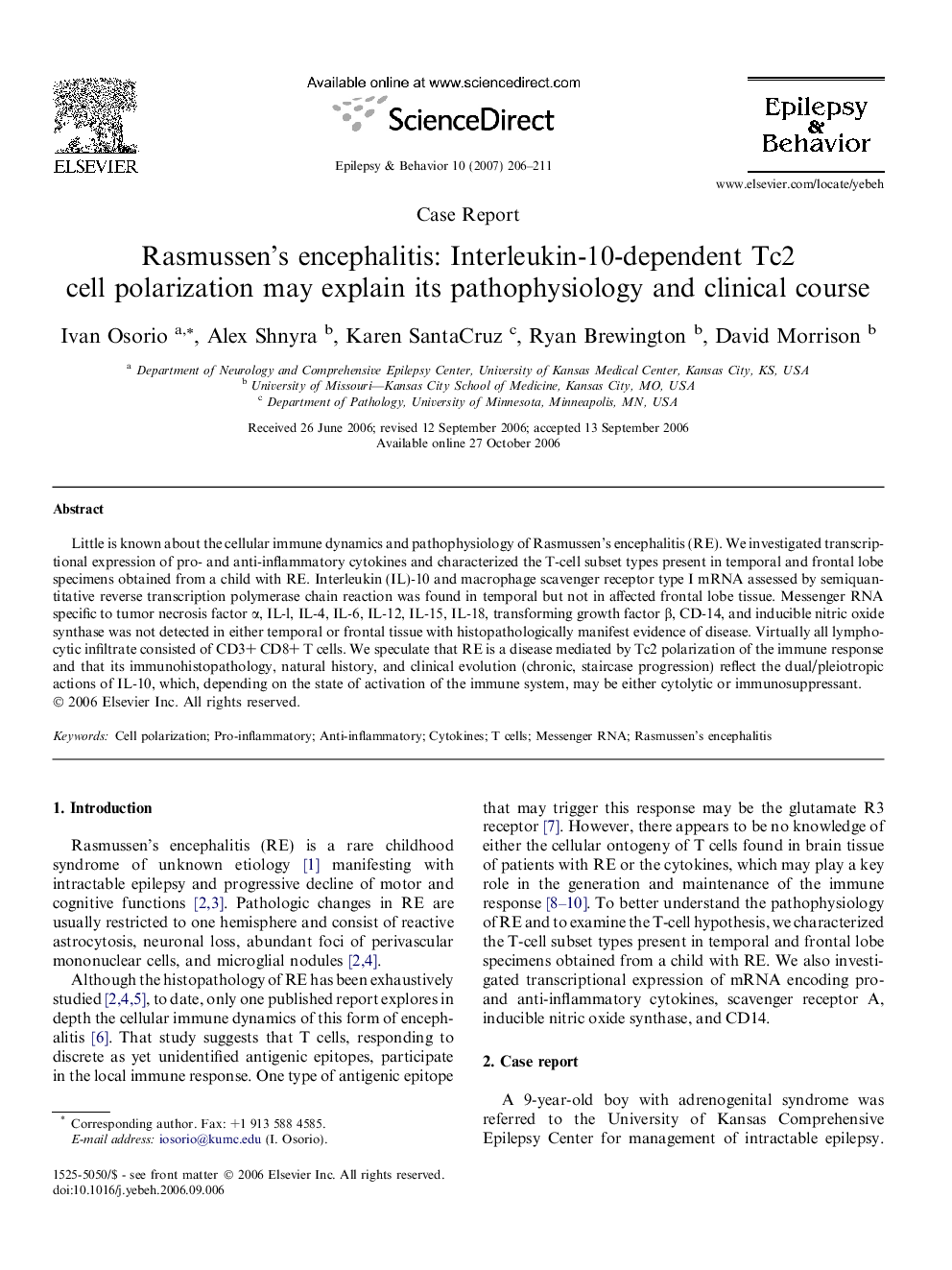| Article ID | Journal | Published Year | Pages | File Type |
|---|---|---|---|---|
| 3051424 | Epilepsy & Behavior | 2007 | 6 Pages |
Little is known about the cellular immune dynamics and pathophysiology of Rasmussen’s encephalitis (RE). We investigated transcriptional expression of pro- and anti-inflammatory cytokines and characterized the T-cell subset types present in temporal and frontal lobe specimens obtained from a child with RE. Interleukin (IL)-10 and macrophage scavenger receptor type I mRNA assessed by semiquantitative reverse transcription polymerase chain reaction was found in temporal but not in affected frontal lobe tissue. Messenger RNA specific to tumor necrosis factor α, IL-l, IL-4, IL-6, IL-12, IL-15, IL-18, transforming growth factor β, CD-14, and inducible nitric oxide synthase was not detected in either temporal or frontal tissue with histopathologically manifest evidence of disease. Virtually all lymphocytic infiltrate consisted of CD3+ CD8+ T cells. We speculate that RE is a disease mediated by Tc2 polarization of the immune response and that its immunohistopathology, natural history, and clinical evolution (chronic, staircase progression) reflect the dual/pleiotropic actions of IL-10, which, depending on the state of activation of the immune system, may be either cytolytic or immunosuppressant.
